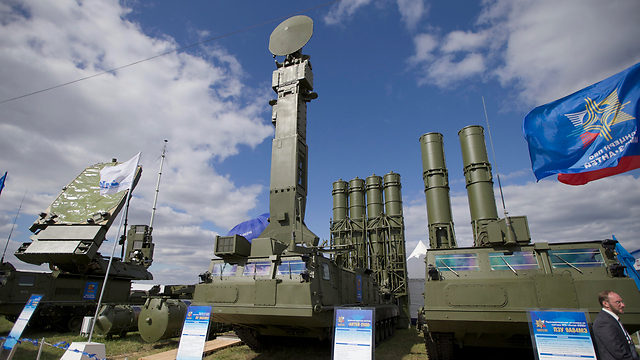
Intimidation as a tool for political survival
Op-ed: Leaders should tell the people the truth and instill them with a sense of security, rather than provide them with regular doses of anxiety and panic in order to retain their grasp on power.
While for the army the intimidation serves as a cover-up or as a need to maintain security tensions for budgetary purposes, for the political leader it’s a cynical manipulation of facts, a sort of brainwashing.
We have yet to recover from the fear of the tunnels which has been aroused again by the state comptroller, and we have already been hit by a new anxiety: The Iranians test-fired the S-300 missiles, the Air Force will no longer be able to operate freely in Iranian skies. In short, we are doomed.
We still have no leader to explain that while this is an advanced weapon system, it is not that relevant to the future aerial battlefield. Not to mention the fact that the Iranians have received the export model, which is less advanced.
The Air Force and NATO are likely familiar with the S-300 missiles. Foreign reports have revealed that IAF planes conducted an exercise in Greece against this missile. Greece, a NATO member, received the S-300 from Cyprus in 2000, and it’s safe to assume that the missile has been investigated by the Americans, who usually cooperate with Israel in the technological field.
In addition, the Air Force is arming itself with stealth aircraft. There are weapon systems in the world which are launched from the air, from the ground and from the sea in ranges which are beyond the S-300 missiles’ destruction area.
Air forces in the world use remote-piloted vehicles which attack targets without endangering pilots, including RPVs with stealth abilities. But someone up there has no problem encouraging the climate of national anxiety in the face of a weapon system which has become a demonic symbol.
For years, Israel lived in the shadow of the SA-5 anti-aircraft ballistic missile, which was deployed in Syria and was supposed to—upon receiving the order—shoot down any Israeli plane flying over the Mediterranean Sea. That didn’t happen.
In the 1980s and 1990s, when the Navy wanted to advance the purchase of new missile boats, it launched a widely-covered campaign warning that all the Arab navies—from Tunisia to Egypt—were prepared to launch hundreds of anti-ship missiles from dozens of missile boats and ground-launched cruise missiles, so that if a war were to break out, even a sack of flour wouldn’t reach Israel via the sea.
The Navy enjoyed its brilliant idea so much, that it went on to describe how these missile boats would show up off Israel’s shores and erase all its strategic sites. That didn’t happen of course, because it was unfeasible. But the public was given its injection of foreboding. And the Navy? It was given the finger.
Lebanon serves today as a main intimidation arena. Because the public, rightfully, will never have the deep intelligence information about this arena, and those who represent the public in the government, and are exposed to the information, have no interest in reducing the anxiety level.
This is why the Yakhont missiles, which Hezbollah is believed to have, are perceived as a concrete threat that is capable of paralyzing all of Israel’s ports. As far as estimations go, Hezbollah isn’t there yet, but the potential has already turned into a concrete fact preserving the level of anxiety.
The same applies to Hezbollah’s accurate missiles. In the public’s imagination, the Kirya base in Tel Aviv has already been erased. Public representatives have spoken in the past and continue to speak today about a death toll of thousands in the home front, reinforcing the paranoia which is factually based on nothing.
The panic reaches its highest level when it comes to Gaza. Hamas has regained all the weapons it lost in Operation Protective Edge. We are doomed again.
That may be true from a quantitative point of view, but in light of the Egyptian-Israeli siege, Gaza is incapable of producing missiles with the quality of an Iranian or Syrian military industry, like the ones that were smuggled from Sinai at the time. Leaders should tell the people the truth and instill security in them, rather than terrify them just in order to retain their grasp on power.











